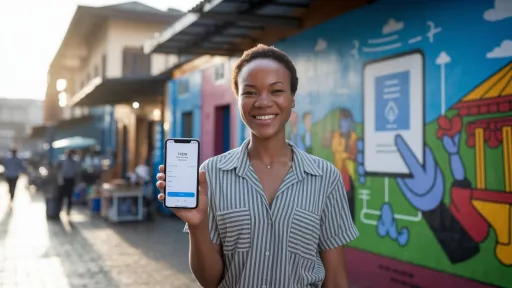
Tanzania is harnessing financial technology (FinTech) to drive economic growth and financial inclusion, particularly in its vast rural and remote regions. This survey note delves into Tanzania’s evolving FinTech ecosystem, highlights key players, and examines government policies fostering FinTech development, with a special focus on their impact on underserved communities as of February 21, 2025.
Background and Economic Context
Tanzania’s Vision 2025 aims to transition the country into a middle-income economy by leveraging digital innovation and financial inclusion. With a population exceeding 60 million, mobile penetration stands at over 85%, yet smartphone ownership remains low at around 25%. This disparity underscores the reliance on USSD-based mobile money services, which have become a cornerstone of the digital economy, contributing significantly to the nation’s GDP growth, averaging 7% annually since 2000.
Current State of FinTech in Tanzania
Tanzania’s FinTech sector is small but growing, with over 40 startups identified by 2024, up from 33 in 2021. Mobile money dominates, led by platforms like M-Pesa, Tigo Pesa, and Airtel Money. The ecosystem includes:
- Payments and Remittances: Comprising 45% of FinTech activity, with mobile money accounts exceeding 33 million by 2021 and transaction volumes reaching new highs.
- Lending and Financing: At 20%, firms like Nala and Ramani provide digital loans to rural SMEs and individuals.
- Savings and Investments: Representing 10%, platforms like Lokofin encourage rural savings.
- Insurance: At 8%, insurtech targets rural farmers with micro-insurance products.
- Enabling Technologies: Supporting 17%, these enhance infrastructure and interoperability.
Key players include:
- Nala: A remittance-focused startup that raised $40 million in 2024, expanding digital payments to rural areas.
- Swahilies: Offers payment solutions for businesses, integrating mobile money to reach remote merchants.
- Jamii: Provides micro-health insurance via mobile phones, targeting low-income rural communities.
Financial inclusion has surged, with formal financial service usage rising from 16% in 2009 to 76% in 2023, largely due to mobile money’s reach into remote areas.
Government Policies and Regulatory Framework
Tanzania’s government has implemented policies to bolster FinTech, indirectly aiding remote communities by enhancing digital access:
- National Financial Inclusion Framework (NFIF) 2023-2028: Launched in 2023, this framework aims to increase financial inclusion to 90% by 2028, emphasizing rural connectivity, digital literacy, and pro-poor innovations like mobile money.
- FinTech Regulatory Sandbox (2024): Introduced by the Bank of Tanzania (BoT), this allows startups to test solutions in a controlled environment. Over 20 firms have participated, focusing on rural-oriented products like microloans and insurance.
- National Payment Systems Act (2015): Updated to support interoperability among mobile money providers, this reduces transaction costs, benefiting rural users reliant on digital payments.
- Tanzania Instant Payment System (TIPS): Launched in 2019, TIPS integrates payment systems for faster, cost-effective transactions, critical for remote areas with limited banking access.
- Financial Sector Development Master Plan (2020-2030): Encourages digital infrastructure investment, supporting rural FinTech expansion.
Specific Initiatives and Impact on Remote Communities
While not all policies explicitly target rural areas, their design supports FinTech penetration into remote regions:
- Mobile Money Interoperability: Pioneered in Tanzania, this allows seamless transactions across providers, vital for rural users with limited options.
- Digital Infrastructure: Investments in a 5,000-kilometer fiber optic network enhance rural connectivity, enabling USSD-based services.
- Rural-Focused FinTechs: Companies like Kilimo BaNDO, handling $500 million in agricultural volumes since 2015, connect over 3.6 million farmers to digital finance.
The impact is striking: 89% of adults accessed formal financial services in 2023, with rural areas seeing a notable uptick due to mobile money’s affordability and reach. A surprising detail is that, despite cash dominating 90% of transactions, digital payments grew by 84% among SMEs in the past two years, signaling a shift even in remote markets.
Challenges and Opportunities
Challenges include unreliable rural internet, low digital literacy, and funding gaps, with only 36% of FinTechs securing seed funding. High mobile money taxes introduced in 2021 also risk pushing rural users back to cash. Yet, opportunities abound:
- Large Unbanked Population: With 67% historically unbanked, rural areas offer a vast market for FinTech solutions.
- Government Support: Initiatives like Silicon Zanzibar attract tech talent, potentially benefiting rural innovation.
- Youthful Demographic: A tech-savvy population under 30 drives demand for digital services.
Conclusion
Tanzania’s FinTech landscape is poised for growth, propelled by mobile money and supportive policies like the NFIF and regulatory sandbox. While challenges remain, the government’s focus on interoperability, digital infrastructure, and innovation creates a fertile ground for FinTechs to serve remote communities. The rapid adoption of digital payments, even amidst a cash-heavy economy, highlights Tanzania’s potential to lead in inclusive financial technology by 2025 and beyond.